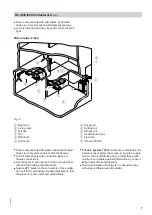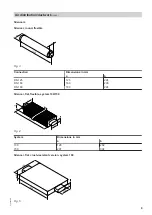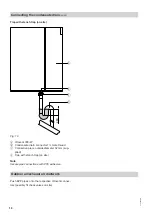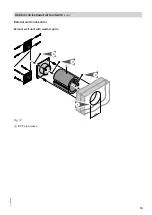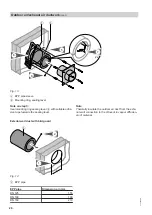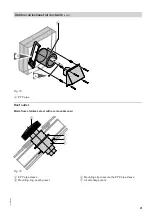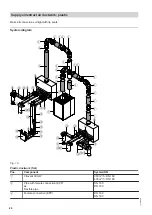
10
Thermal insulation of the ductwork
■
Thermally insulate
the outdoor air and exhaust air
ducts to prevent the formation of condensate, as
specified by DIN 1946-6; these must also have an
external vapour barrier.
■
Heat losses from the ductwork
must
be kept to a
minimum to ensure optimum heat recovery.
Thermally insulate all ductwork in unheated areas in
line with DIN 1946-6.
Insulation measures:
■
Insulate in accordance with current engineering
standards.
■
Seal joints.
■
Avoid gaps.
■
Isolate ceiling and wall ducts with insulation strips.
■
Suitable insulation material could be, for example,
Armaflex.
Note
No additional thermal insulation is required for EPP
pipes or bends.
Siting
Installation requirements
■
Preferably install the ventilation unit inside the air-
tight and thermally insulated building envelope.
!
Please note
The installation room must be dry and free
from the risk of frost.
Ensure ambient temperatures between 2 and
35 °C.
■
The Vitovent 300-W can be floorstanding or wall
mounted.
■
Keep ductwork to the extract air and, where appro-
priate, supply air areas short.
■
Thermally insulate supply air and extract air ducts
that are routed through unheated areas of the build-
ing with vapour diffusion-proof materials (not applica-
ble to EPP pipes or bends).
■
A mains power socket is required for the power sup-
ply.
■
Install the remote control in a central location, e.g.
living room, kitchen or hallway.
Install a 2-core control cable for connecting the
remote control to the ventilation unit (0.5 mm
2
, max.
length 50 m).
■
Connect the condensate drain to a waste water pipe.
■
The ventilation unit must be accessible for mainte-
nance purposes.
Possible installation sites:
■
Separate plant room, storage area or utility room on
the ground floor
■
Cellar
■
Thermally insulated long pane attic room
Open flue combustion equipment and Vitovent
Danger
The simultaneous operation of open flue com-
bustion equipment (e.g. an open fireplace) and
the Vitovent in a space with combustion air inter-
connection results in dangerous negative pres-
sure in the interior. Negative pressure can result
in flue gas re-entering the room.
In order to prevent health risks, observe the fol-
lowing:
■
Never
operate the Vitovent simultaneously with
open
flue combustion equipment (e.g. open fire-
place).
■
Only operate combustion equipment in
room sealed
mode with a separate combustion air supply. We rec-
ommend combustion equipment that has general
building approval as
room sealed
combustion equip-
ment of the Deutsches Institut für Bautechnik (DIBt)
[Germany].
■
Keep doors to boiler rooms that are not part of the
combustion air interconnection with the living space
airtight and shut.
Air distribution/ductwork
(cont.)
5793 589 GB







